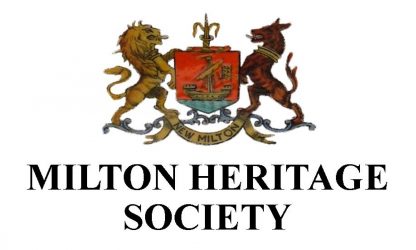The development of Barton on Sea which has taken place over the last 125 years has been quite dramatic. This started in 1894 when the Barton Court estate was put up for sale. There were two sales of plots of land that year. 65 plots were sold on the 11th July and 40 plots on 24th of October. Another 150 plots were put up for sale on 24th June 1896. Much was done to market the sale and encourage potential buyers to come to Barton Court where the sales were held. The area was described as the ‘English Bay of Naples’ and great emphasis was made of the available, sailing, hunting and fishing as well as abundant fossils in the local cliffs. The new station at Milton was highlighted along with journey times to Bournemouth, Southampton and London.
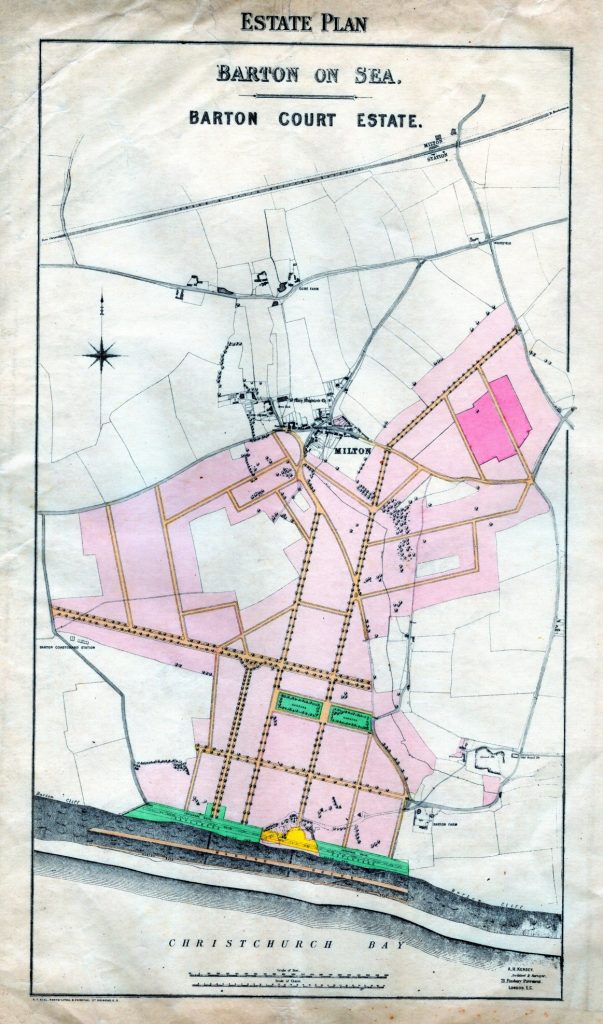
Milton Heritage Society Collection
The catalogues were accompanied by a map showing the potential purchaser the proposed layout of the new housing area. Barton Court Road and Barton Court Avenue are clearly visible along with other avenues and roads, all as straight as a ruler. Grand plans for the area included a pier and the type of buildings seen here. These plans can be viewed in the Hampshire Records Office.
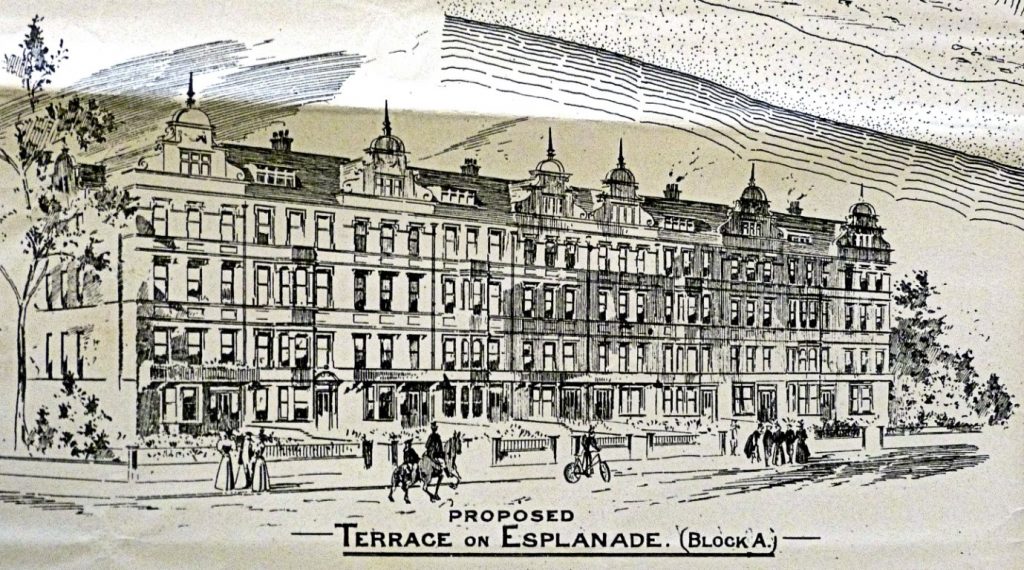
Courtesy of the Hampshire Records Office
There were a number of stipulations attached to the plots. These included the respecting of building lines back from the road, the compulsory erection of fences to delineate plots, the minimum value of a house to be built on specific plots. Other stipulations included only constructing dwelling houses, coach houses and or stables on the plot and an undertaking not to obstruct or damage the highway.
1895 and 1896 saw the sale of the Barton Farm estate, much of which was bought by Mr Alexander Paris who also purchased Barton Common. Controversially Mr Paris put a fence around the common and tried to prevent the locals from using it. He tried to enforce his action in the High Court but lost his case. By1898 Barton Court, now transformed into a luxury hotel was being advertised in Country Life Illustrated promoting the healthy atmosphere in the seaside area and luxury available ‘at no great cost’ in the hotel. This started to draw the well to do down to Barton.

1904 saw five sales of various plots around the Barton Court Avenue and Barton Court Road area as well as Christchurch Road and Lymington Road area. There was a great deal of marketing done including the offer of discounted return train tickets from Waterloo, Surbiton, Winchester and Southampton.
Further sales took place in 1905, 1906 and 1907. Interestingly this also included the inland area which now comprises Old Milton Road, Hobart Road and Compton Road. There were even more sales of individual plots in 1909, 1910 and 1911.
Not all of this development was welcomed. The travel writer D.H. Moutray Read wrote of Barton in 1908 that ‘this coastline has been invaded by the speculative builder. Scattered about everywhere are painfully new villas and “desirable marine residences”. Those that are not TO BE SOLD invariably are TO LET! White boards on low posts announce the existence of Avenues or Parks. Two villas make an Avenue and park probably consists of a double row of seedlings down a loosely gravelled track. Hotels seem to flourish and golf links abound’.
The golf links that Moutray Read refers to were to be found on the cliff tops. The 9 hole course was created for the residents at the Barton Court Hotel but was available on payment to non residents.
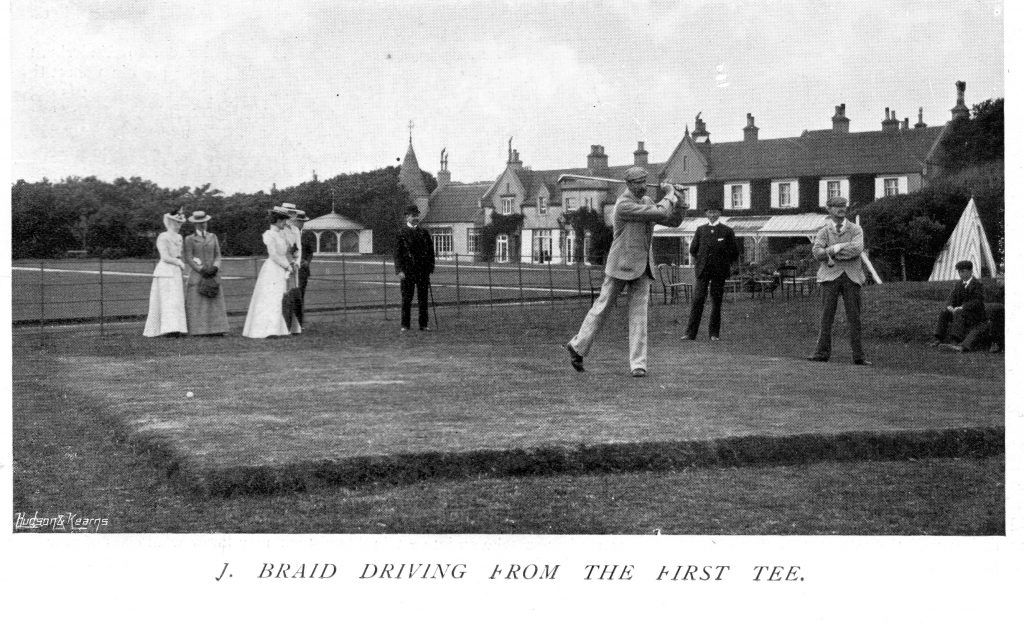
Prices varied for individual plots. In the sale of 5th of October 1904 the average price for a plot of land in Barton Court Road was about £45. This is roughly worth about £5,500 today. A plot of land on Marine Drive sold for £130 which today is roughly worth £15,500. In 1906 plots in Grove Road sold for £36.00. Today this would be about £4,300.
Using the sale documents it is possible to put an age to some of the older buildings in Barton. For example the Onion Dome building beside the Indian Memorial is a well know landmark with its golden coloured turret top. The plot on which it was built was sold on the 5th of October 1904. On a map to accompany the sale of a neighbouring plot on the 4th of July 1906 we can clearly see a building with a circular turret shape named ‘The Anchorage’.
New roads were created and old ones altered or removed. For many years the only ways to get to the coast were via Barton Lane, or going along Moat Lane, into Dilly Lane and emerging at Barton Farm, which is now under Grove Road. Southern Lane, previously known as Thousands Lane, led southwest to Barton Lane from Milton Green. The new developments reduced the length of Barton Lane when Sea Road cut through from Christchurch Road. Southern Lane was cut by Keysworth Avenue. Moat Lane and Dilly Lane were split and realigned when Barton Court Avenue ran through them.
The large houses built on the original plots were slowly but surely sold and developers sought to build a number of houses on the site. An example of this is ‘White Knights’ off of Barton Court Avenue.
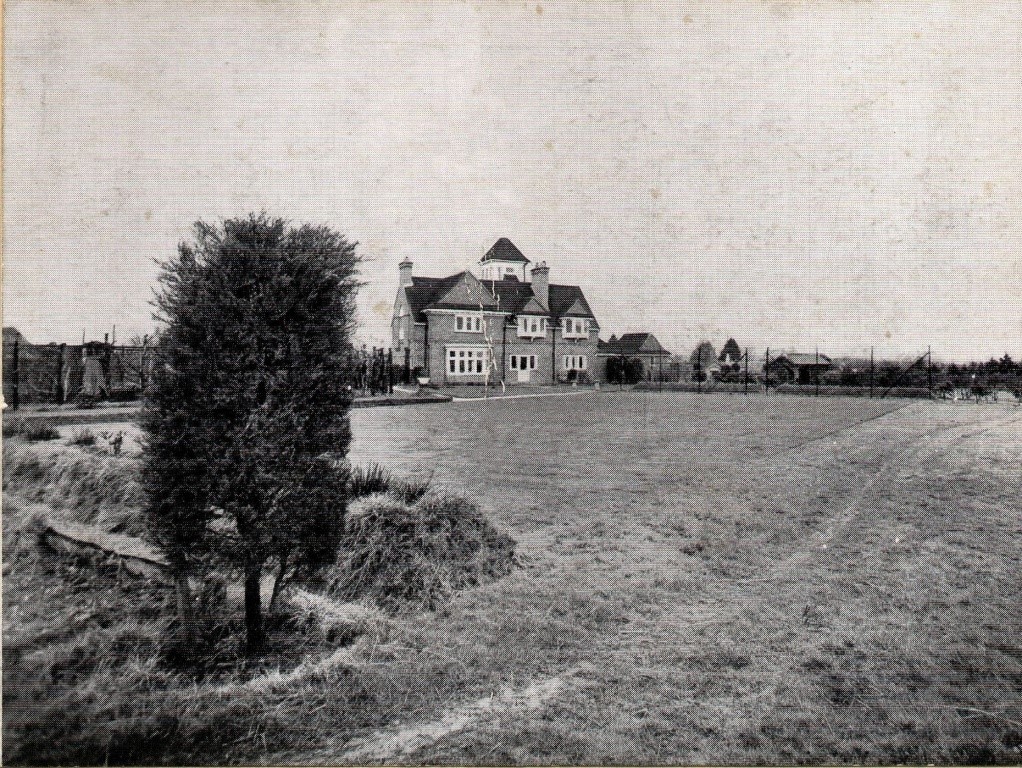
This was a large private residence set in extensive grounds. The house and grounds were sold at auction. Later 36 houses were built on the site. This has been fairly typical of development in the area where a substantial property and grounds have been turned into a small estate.
Over 125 years have gone by since the first sale of land in Barton. The development of the old Barton Court estate lands has been extraordinary and continues today.
